The first few days of life for any newly hatched chick requires understanding and support from the keeper as the chick's needs are in the keepers hands. Add in the fact that game chicks are particularly small and vulnerable, a regard for the optimal environment will increase liveability and reduce mortality, with the added benefit of having strong and even birds further into rear. Think of brooding as creating the foundations and you build on this as the poults progress through rear.
The brooding phase starts as soon as the chicks arrive on site and continues until the poults are weaned off the heat. The environment covers temperature, humidity, light, litter, food and water availability. You need to recreate as best you can the security and warmth the hen bird would provide for her young in the natural environment. Fig 1.
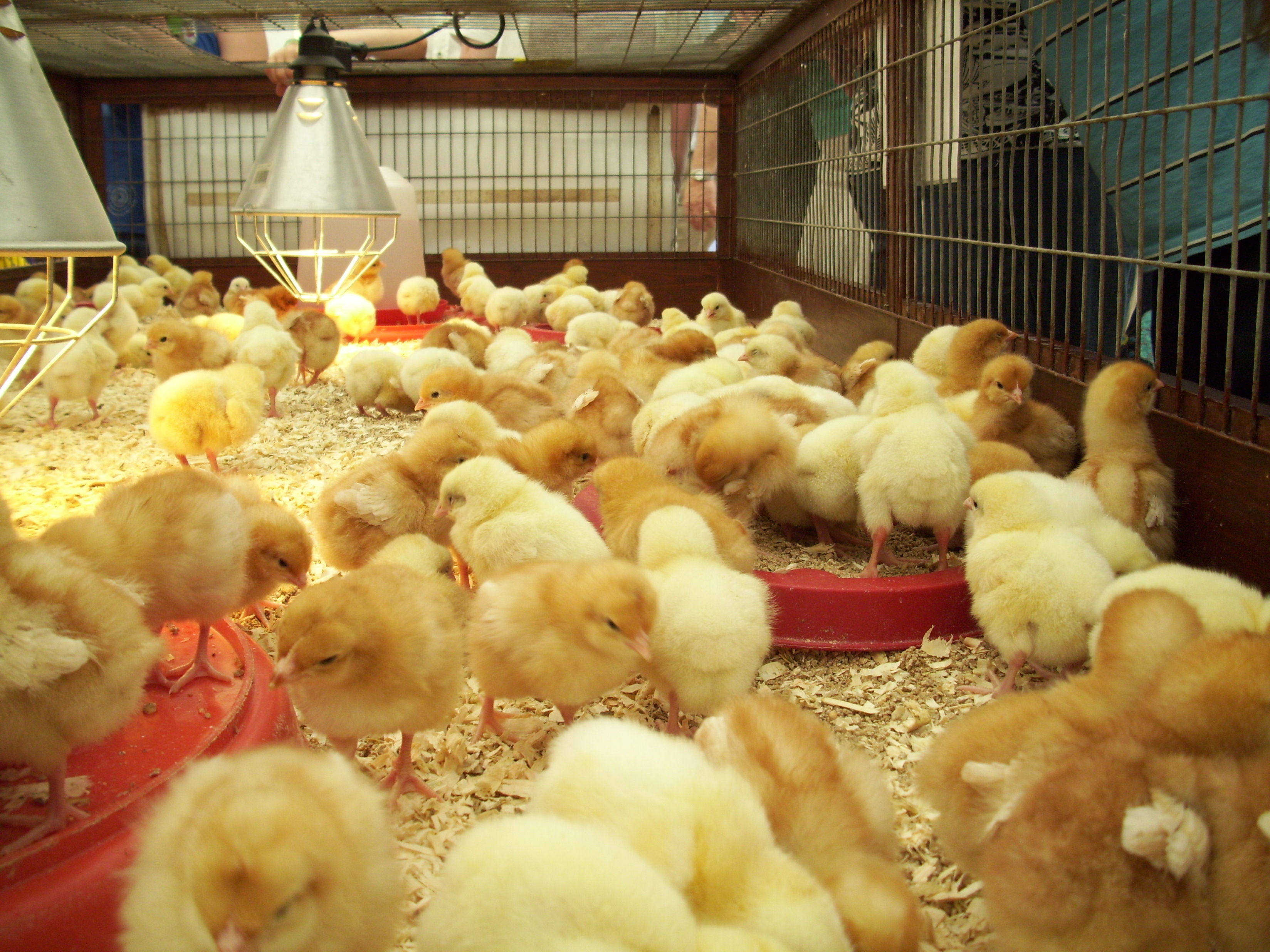
Fig 1 Newly hatched chicks.
One key problem faced by game chicks is variability in temperature; cold nights and warm days give rise to chilling (hypothermia) and overheating (dehydration), the two most likely reasons for early mortality.
Setting up
When setting up the brooding houses it helps to imagine what the chicks will feel comfortable with on arrival. The depth of bedding needs to be deep enough to keep chicks off the damp ground and block up any draughts so chicks don't chill. Remember a chick has come out of an egg, where it was wet, has dried off in the hatcher and fluffed up before being transported to your site. Therefore, it has been through quite a bit of stress already, so minimising any further stress will help to give the chick the best chance of survival.
Food provision needs to be such that a chick doesn't need to go far to find food. When chicks arrive on site they have no mother to show them how to eat or drink, so having many feed trays dotted around the brooding house increases the chances of early feed intake. You can use chick paper which is on a long roll; you put the paper on top of the bedding and tip feed onto it. This lasts a few days then disintegrates, by which time chicks will be feeding easily out of the feed trays.
Chicks can easily dehydrate from excessive heat from the brooders so having plenty of water available helps reduce mortality through dehydration. Water drinkers must be clean and free of faecal matter. A good tip is to run the lines through on the morning of chick placement so it is as fresh as possible. You may wish to put some electrolytes into the water for the first few days as this will help the chicks get off to the best start. If you are using bore- hole water it is worth getting it tested for bacteria. If it has a high bacterial count you are best to use a water sanitiser to reduce bacterial content, as bacteria will be harmful to the chicks. Also make sure you have no water leaks as chicks will very quickly get hypothermic if they get wet. Fig 2.
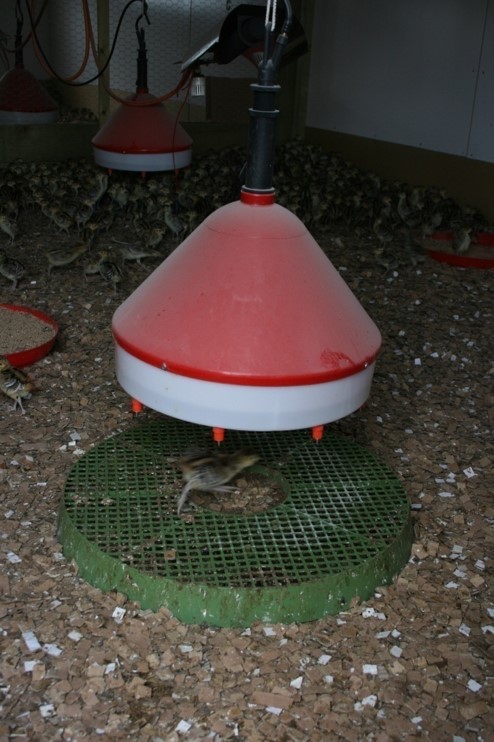
Fig 2 Nipple drinker and grid.
Heating is one of the trickiest things to get right because usually game brooding houses are not very insulated. This can cause chicks to go through some spikes of high temperatures and major dips of cold temperatures, particularly at night. These temperature swings can retard chick's growth because they need a constant temperature to grow evenly. When chicks are over-heated or chilled they tend to sit down and not feed, therefore causing runting, as they are not taking in the necessary nutrient's to optimise growth and development. Often canopy brooder heaters are used which can give the ideal environment for the chicks if managed correctly, however, it is important to check you have a heater with an appropriate output for the size of the brooder house. Commonly, they are too powerful making it difficult for chicks to get away from the heat. You can use a laser thermometer to check the bedding temperature so you have a clearer idea of it suiting the chicks. Figs 3 and 4.
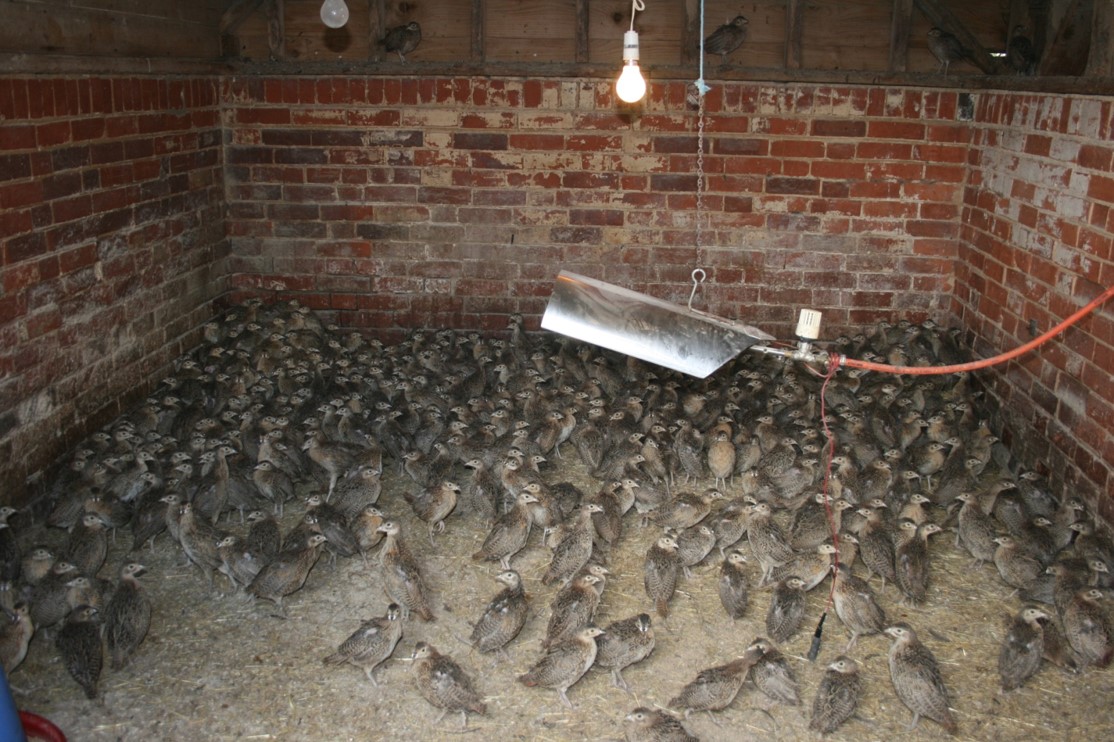

Figs 3 and 4 Examples of heating.
For the first few days using brooding rings is a good way of keeping chicks contained so they don't get stuck in corners plus a brood ring eliminates all draughts. If using 8x8 houses for brooding then using a ring is not really practical, but with larger brooder houses ring brooding will give the chicks an ideal environment.

Fig 5 Example of 8x8 indoor house.
The key to good brooding is to get a 'comfort zone' in the heat ring around the brooders. 32 ͦc on the bedding surface is what you are aiming for. If you go above this the chicks will get too hot and will cease feeding and drinking. The two heat sensitive images below show a brooder ring on the left which is too hot and a brooder ring on the right which is set at the correct heat for days old chicks.
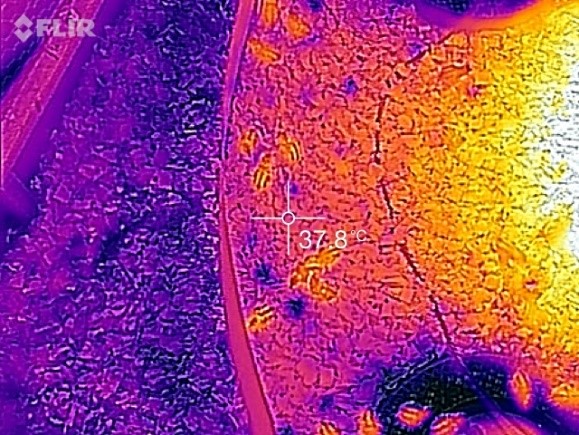
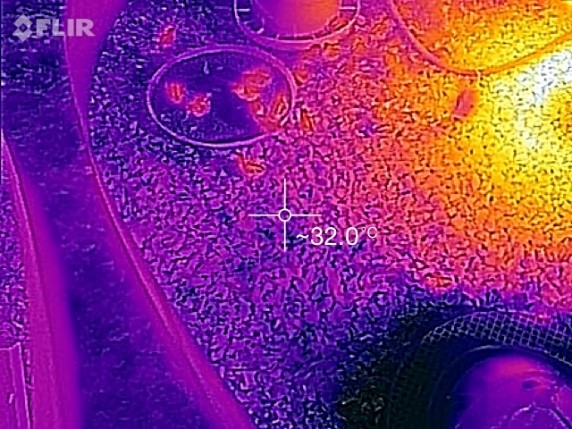
Figs 6 and 7 The key to good brooding is to get a 'comfort zone' in the heat ring around the brooders.
Gas heating will produce a gas called carbon dioxide (CO2) which is toxic to chicks at high levels. Ventilation is therefore essential to reduce the likelihood of chicks becoming sluggish which will lead on to an increase in mortality. The best way to combat this problem is to make sure the window vents are slightly ajar to let in some fresh air.
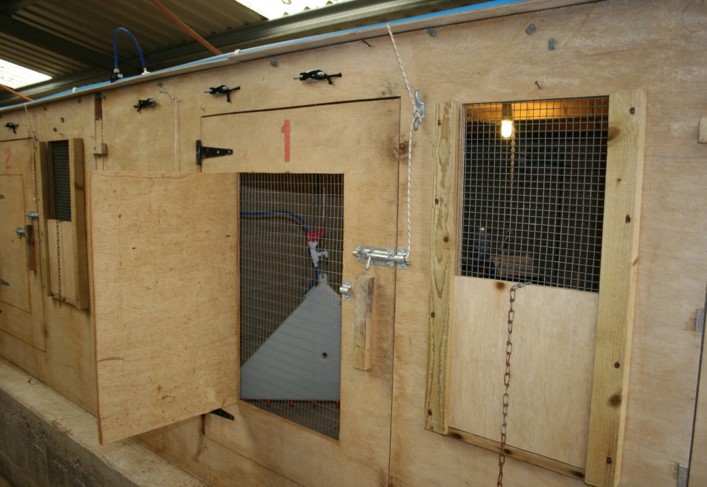
Fig 8 Window vets ajar to let in fresh air.
The most important thing is to observe chick behaviour, listen to the noise they are making and adjust the controls on the heater accordingly. If chicks are going to the sides of the house or brooder ring then they will be too hot; if they are huddling in the middle then it is likely they are hypothermic.
When chicks have been in the brooder house for 24 hours you can carry out a crop fill check. This is done by catching up chicks and checking each one to see if it has eaten. This can be quite tricky with partridge chicks as they are so small, but it is quite easy with pheasant chicks. Hold the chick in one hand and with the other hand feel the chick's crop for food. It should be full and soft to show it has eaten food and had some water. You can gauge your success of brooding by getting chicks off to a good start, and eating well in the first 24 hours will optimise your success.
Chicks are capable of living for several days (72 hours) without food and water, but of course this will do them no good and they will die around the fourth day. The reason they can do this is because they have an energy store in their yolk sac, which was absorbed into the chick's body just before it hatched. This yolk store should be used for immunity as intended rather than as an energy source. If you make sure you get your brooding right then the yolk will be used for its purpose giving chicks protection from disease rather than being used up as fuel.
If you are experiencing a high mortality in your chicks and you can't attribute it to the temperature being too hot, too cold or a water leak, then consult your vet. Your chicks may have an infection which could need treating.





